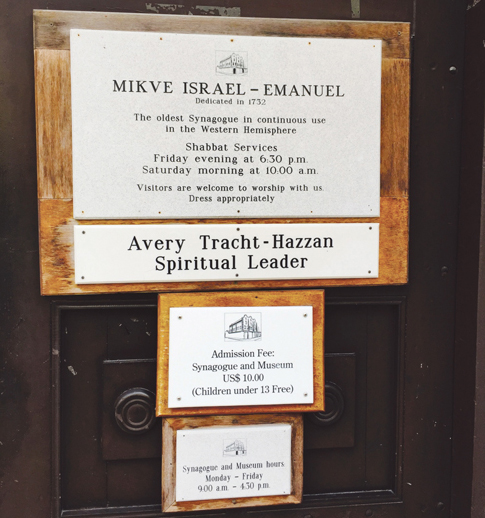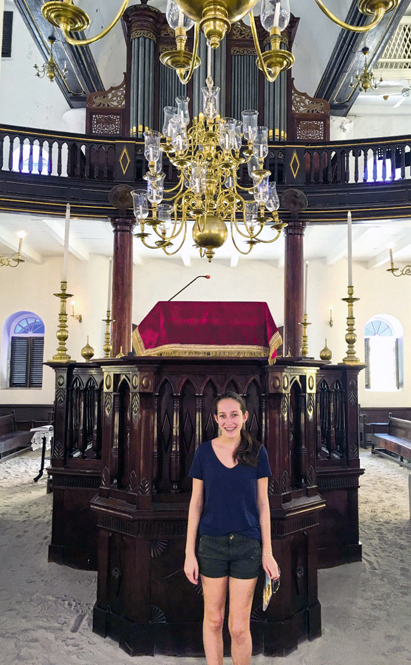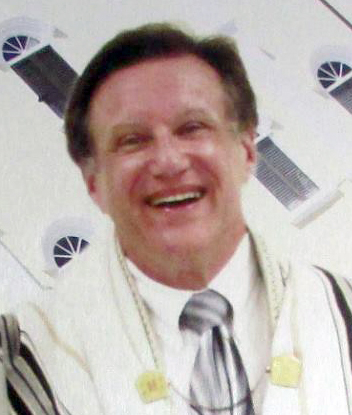Face to face with Jewish history in Curaçao

Story and Photos By Jon Freeman, Special To The Dayton Jewish Observer
A February trip to the Caribbean island of Curaçao gave me the kind of unexpected connection to Judaism I’ve only felt a few times in my life. When my family and I disembarked from our ship, instead of hitting the beach, we decided to tour the capital city, Willemstad. While we were renting a car, we saw an ad that read, “Visit Synagogue Mikvé Israel-Emanuel.” My father-in-law encouraged us to have a look.
We set off through the bustling outdoor markets that lined the canals of the city. We passed cart after cart of papayas, oranges, bananas and pineapples, until we reached a lemon-colored building that blended into the surroundings. A small sign let us know we had arrived at the synagogue. The building is majestic but simple.
Mikvé Israel-Emanuel is the oldest continuously used synagogue in the Western Hemisphere. This building dates to 1732. The Jewish community first settled in Curaçao in 1651. The synagogue’s current membership is approximately 115 households.

Why did Jews feel safe on this tiny Caribbean island just about 30 miles off the coast of Venezuela? Congregants and plaques tell the story inside the walls of the synagogue. To escape the Inquisition, Jews fled Spain in the 15th century for the more tolerant Holland. There they flourished and became great businessmen, professionals and scholars. As the New World gave the promise of escaping the historical oppression of the Old World, a small group of Dutch Jews looked to Curaçao.
The powerful Dutch West India Company first thought Curaçao would be an excellent source of agricultural and trade revenue. However, business was failing. A group of Dutch Jewish businessmen convinced the company and the government that they could make it work. They came to Curaçao and succeeded in shipping and trading. In 1652, the Dutch government formed a contract with the early Jewish settlers of Curaçao that declared religious liberty for the Jews. This was the Jews’ first guarantee of religious freedom in the New World.
Inside Mikvé Israel-Emanuel, the Caribbean sun poured through the sanctuary’s heavenly blue stained-glass windows. A congregant pointed out the four main pillars holding up the roof of the structure. On each pillar is engraved the name of one of Judaism’s four matriarchs. Our congregant-guide explained this was the synagogue’s way to honor the strength and continuity that women bring to Jewish life. I’m sure my mother would agree.
The floor of the sanctuary is of white sand. At first, I thought that was a nice touch, since we were in the Caribbean. But I learned the sand has far more meaning.
First, it symbolizes the Israelites’ encampments in the desert over 40 years on the way to the Promised Land. Second, the congregants wanted a reminder that they had to pray in secrecy in Europe, with their movements and sounds of praying muffled in the sand. To be found praying as Jews in Spain had dire consequences. Third, the sand symbolizes God’s promise to Abraham: “I will multiply your seed as the stars of the heaven, and as the sand which is upon the seashore (Gen. 22:17).”
From the sanctuary, we entered the attached museum. When I saw the centuries-old artifacts there, it hit me. On this spot, I felt what Jews must have felt for millennia: the hope that there would be no more running. No more praying in secrecy. No more fear for their lives.

On this spot, in those times, they hoped they would finally have the inalienable right to live and prosper. That the synagogue’s congregants have been thriving on this spot since the 1700s is all the proof I needed.
“Dad, why do you have tears in your eyes?” my daughter, Julia, asked.
I said, “Look at what is in front of us.”
It was a Torah smuggled out of Spain just before the Inquisition. The Torah was inscribed in 1320.
We were looking at more than a Torah: it was a symbol of the life and times of our people across centuries. After hundreds of years of traveling the world to guarantee its safety, that Torah finally found a home to be read in peace.
With its peace came the peace of a people who had been uprooted from nearly every home they had ever known.
Jon Freeman, an attorney based in Dayton, enjoys seeking out historic synagogues when he’s on vacations with his family.

Editor’s note: Proving once again that all roads lead through Dayton, we learned after we went to press with our print publication that Synagogue Mikvé Israel-Emanuel’s spiritual leader, Cantor Avery Tracht, has Dayton roots. A graduate of Meadowdale High School’s Class of 1971, Tracht also served as cantor at Dayton’s Temple Israel while he studied for his bachelor of music degree in opera, oratorio and art song at the University of Cincinnati College-Conservatory of Music. He has served at the synagogue in Curaçao since 2005. Tracht’s parents, the late Edith and Bernard Tracht, were longtime members of Beth Abraham Synagogue. Click here to see Cantor Tracht sing at Synagogue Mikvé Israel-Emanuel in Curaçao.
To read the complete May 2016 Dayton Jewish Observer, click here.

